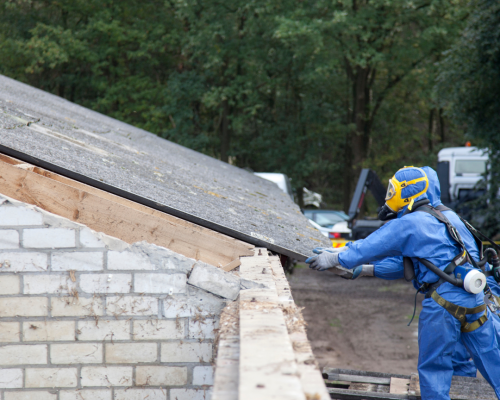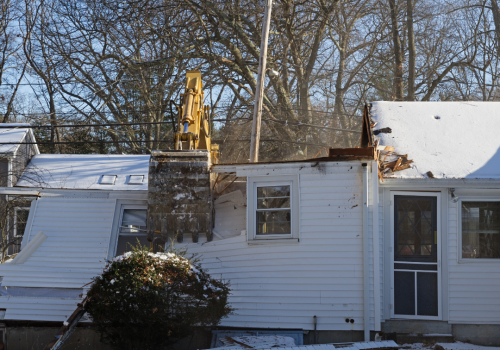Demolition Dangers: Understanding the Risks and How to Mitigate Them
In the world of construction and renovation, demolition is often the first step towards progress. However, amidst the excitement of tearing down old structures to make way for something new, there lurks a myriad of dangers that can pose serious risks to both workers and bystanders. Understanding these risks is paramount to ensuring safety on the job site.
From the potential for structural collapse to the release of hazardous materials such as asbestos and lead, the demolition process is fraught with peril. Moreover, the use of heavy machinery and explosives only amplifies the danger if not handled with care. But fear not, for with proper knowledge and precautionary measures, these risks can be effectively mitigated.
In this blog post, we will delve into the various hazards associated with demolition work and explore practical strategies for minimizing them. Whether you’re a seasoned contractor or a curious homeowner, equipping yourself with this information could mean the difference between a successful demolition project and a catastrophic disaster. Let’s dive in and uncover the secrets to safe and efficient demolition practices.
Introduction to Demolition Safety
Demolition is a necessary and often complex aspect of construction and redevelopment projects. It involves the dismantling or destruction of structures, whether they are old buildings, bridges, or other infrastructure, to make way for new developments or renovations. While demolition is essential for progress, it also poses significant risks to workers, bystanders, and the environment if not approached with caution and care.
- Understanding the Risks: Demolition work involves numerous hazards that can lead to accidents, injuries, or even fatalities if not managed effectively. These risks include structural instability, exposure to hazardous materials like asbestos and lead, falling debris, machinery accidents, and environmental concerns such as pollution and noise.
- Importance of Safety Planning: Before initiating any demolition project, thorough safety planning is essential. This involves conducting comprehensive risk assessments to identify potential hazards, evaluating the structural integrity of the building or structure to be demolished, and developing detailed demolition plans that prioritize safety.
- Training and Education: Proper training and education are crucial for all personnel involved in demolition work. Workers must be trained in the safe use of equipment, handling hazardous materials, recognizing potential dangers, and following established safety protocols. Regular safety briefings and refresher courses should be conducted to ensure that everyone remains vigilant and informed.

- Personal Protective Equipment (PPE): The use of appropriate personal protective equipment is non-negotiable in demolition work. This includes hard hats, safety goggles, hearing protection, gloves, and respiratory protection to guard against airborne contaminants. Ensuring that all workers are properly equipped with PPE is essential for minimizing the risk of injury or illness on-site.
- Safe Demolition Practices: Implementing safe demolition practices is paramount for preventing accidents and injuries. This includes proper bracing and shoring of structures to prevent collapse, controlled demolition techniques to minimize dust and debris, and the use of specialized equipment operated by trained professionals.
- Environmental Considerations: Demolition activities can have a significant impact on the environment if not managed responsibly. Measures should be taken to minimize dust, noise, and pollution, as well as to properly dispose of hazardous materials and waste. Environmental regulations must be adhered to throughout the demolition process to protect the surrounding ecosystem.
Hazardous Materials Management: Safeguarding Health and Environment in Demolition Projects
Demolition projects often involve the removal of structures that may contain hazardous materials, presenting significant risks to both workers and the environment if not managed properly. Asbestos, lead, mold, and other dangerous substances commonly lurk within older buildings slated for demolition. Effective hazardous materials management is paramount to protect the health and safety of workers, prevent environmental contamination, and ensure compliance with regulations.

Identifying Hazardous Materials
Before initiating a demolition project, thorough assessments must be conducted to identify any hazardous materials present in the structure. This process often involves surveys and testing conducted by qualified professionals to detect substances like asbestos, lead-based paint, PCBs, mercury, and other harmful chemicals. Accurate identification is crucial for developing appropriate mitigation strategies and ensuring the safety of workers and the public.
Risk Assessment and Mitigation Strategies
Once hazardous materials are identified, a comprehensive risk assessment should be performed to evaluate the potential risks associated with their removal and disposal. This assessment considers factors such as the type and quantity of hazardous materials, their condition, accessibility, and potential exposure routes. Based on the findings, mitigation strategies are developed to minimize risks, which may include containment, encapsulation, or removal by certified professionals using specialized equipment and procedures.
Safe Handling and Removal Procedures
Handling and removing hazardous materials require strict adherence to safety protocols and regulatory requirements. Workers must receive proper training on the hazards associated with each material, as well as the correct procedures for handling, containment, and disposal. Personal protective equipment (PPE), such as respirators, gloves, protective clothing, and eye protection, must be provided and used consistently to prevent exposure. Additionally, engineering controls such as ventilation systems and wet methods may be employed to minimize the release of hazardous particles into the air during removal activities.
Disposal and Waste Management
Proper disposal of hazardous materials is critical to prevent environmental contamination and potential health hazards. Depending on the type of material, disposal may involve transportation to licensed facilities for treatment, recycling, or secure landfill disposal. Strict adherence to local, state, and federal regulations governing hazardous waste disposal is essential to avoid legal repercussions and protect the environment.
Documentation and Recordkeeping
Maintaining accurate documentation throughout the hazardous materials management process is essential for regulatory compliance and liability protection. Records should include documentation of surveys, test results, risk assessments, removal procedures, waste manifests, and disposal receipts. These records serve as evidence of due diligence in managing hazardous materials and may be required for audits, inspections, or legal purposes.
Continuous Monitoring and Oversight
Hazardous materials management is an ongoing process that requires continuous monitoring and oversight to ensure compliance with regulations and the effectiveness of mitigation measures. Regular inspections, air monitoring, and testing should be conducted to assess the efficacy of control measures and identify any emerging risks or deficiencies. Adjustments to procedures or additional controls may be necessary based on monitoring results and changing project conditions.
Conclusion
JUNKAHAULICS in Raleigh, North Carolina, we recognize the critical importance of understanding the risks associated with demolition projects and implementing effective mitigation strategies. By prioritizing safety measures and employing best practices, we strive to ensure the well-being of both our team members and clients. Our commitment to thorough planning, proper training, and adherence to regulatory standards underscores our dedication to delivering high-quality services while minimizing potential hazards. With a focus on risk awareness and proactive mitigation efforts, we aim to safeguard lives, property, and the environment in every demolition endeavor we undertake.




